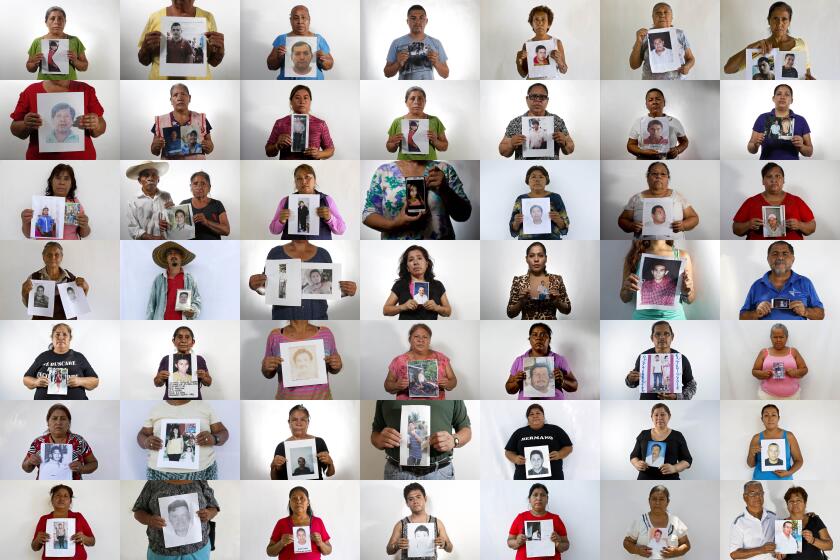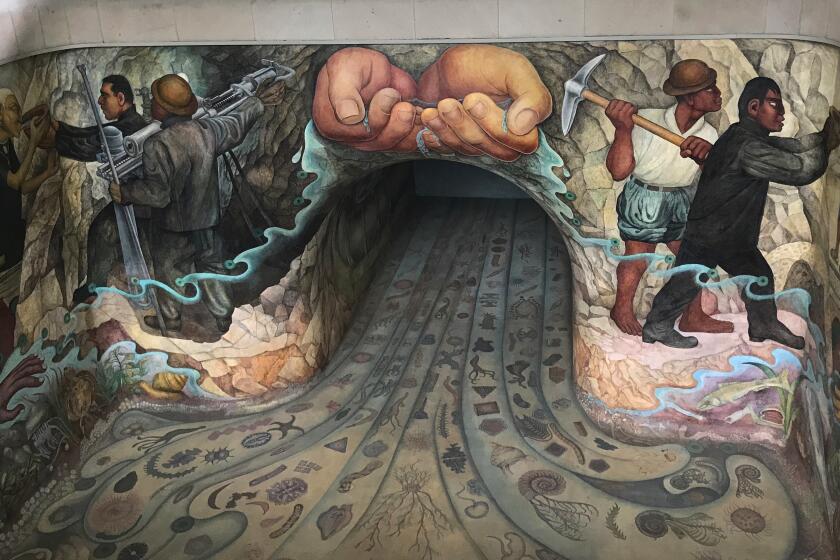
- Share via
CUILCO, Guatemala — In their native village in southern Mexico, people once lived a tranquil existence. The 30 or so families planted coffee, corn and beans, while some kept chickens and a few cows.
“We were never afraid of anything,” said Melina Martínez, 28. “We could come home at night, at 1 o’clock in the morning. It was peaceful.”
The first signs of trouble came late last year, when gunmen began showing up in the hamlet — named México Nuevo — and setting up checkpoints on roads to shake people down for cash. Residents said that at least two young men were abducted at gunpoint from their beds and conscripted into a drug cartel.
Then late last month, after heavy shooting broke out nearby, most of the villagers trudged through the bush for two hours across the border to Guatemala.
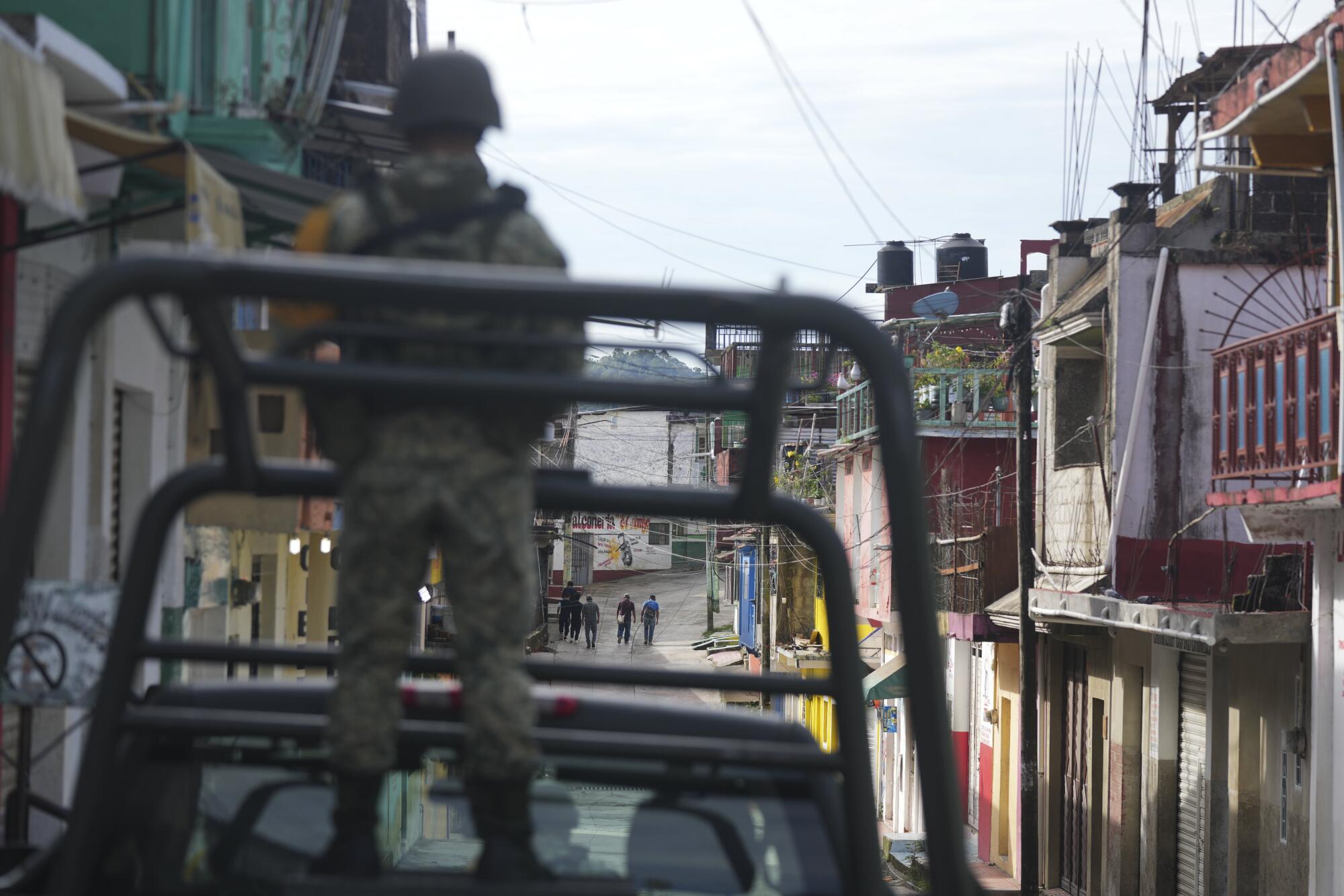
“We all decided to run because we thought they would invade our community,” explained Martínez, who left with her 8-year-old son.
They are among thousands of people displaced by an escalating turf war that has engulfed much of Mexico’s Chiapas state — known for its Indigenous cultures, spectacular nature, Maya ruins and picturesque colonial towns — in the sort of violence that has already convulsed so much of the country.
Rival criminal gangs are fighting for lucrative smuggling routes along the 400-mile frontier with Guatemala, a corridor for cocaine, arms and migrants.
Mexican officials are demanding answers from investigators in the case of a politician whose killing appears tied to the capture of Ismael ‘El Mayo’ Zambada.
Some of the mobs operate semiautonomously, but most appear to be linked to one of Mexico’s two major cartels — Sinaloa and Jalisco New Generation.
Assassinations, kidnappings and displacements have come to dominate life across wide swaths of Chiapas, said Gerardo González Figueroa, a researcher with El Colegio de la Frontera Sur in the city of San Cristóbal de las Casas.
“This has become a high-intensity war between two cartels with extraordinary levels of firepower,” he said.
Villagers are trapped in the middle, and the government has been unable to do much about it.
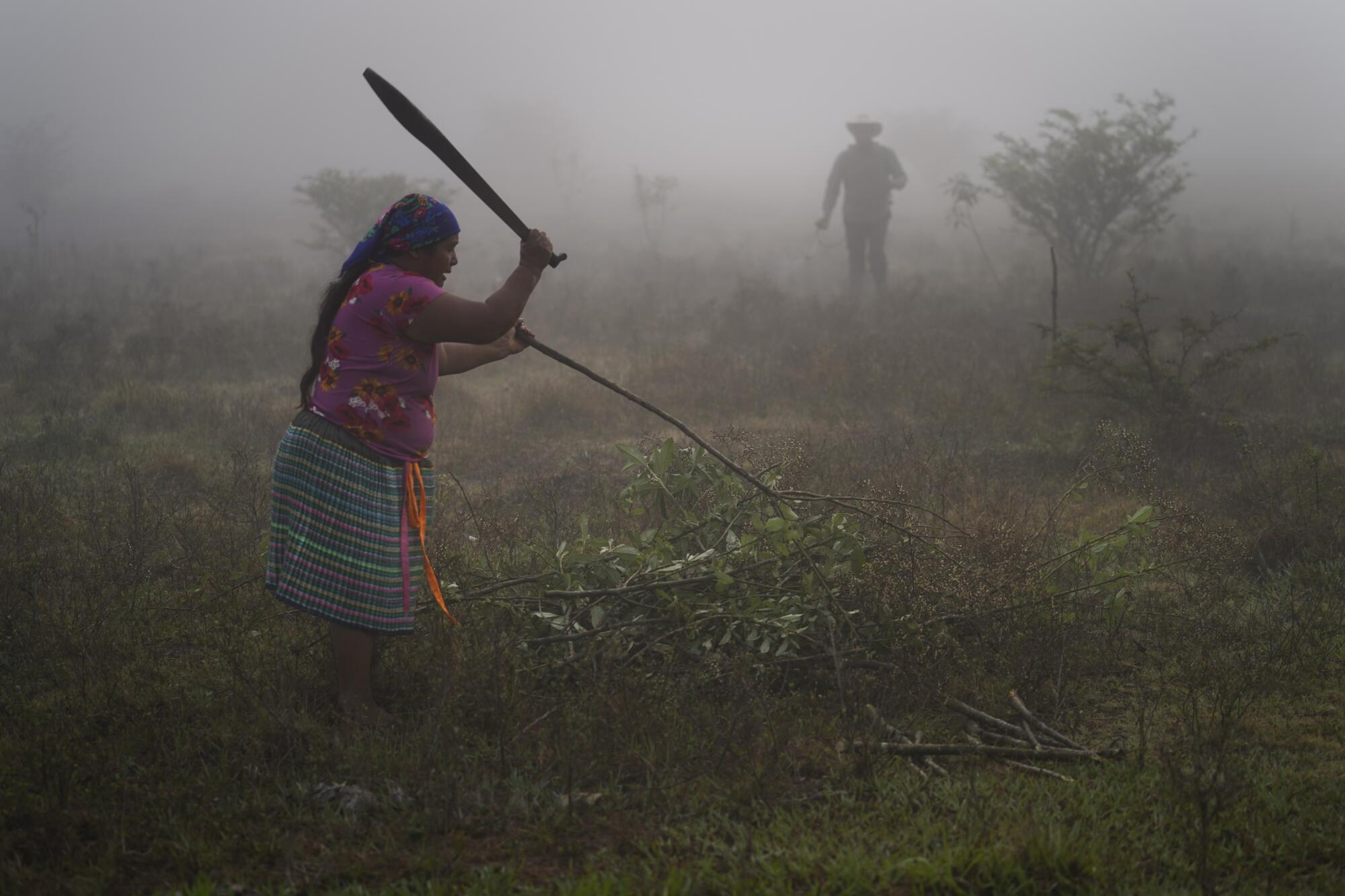
: :
Chiapas is Mexico’s poorest state. Nearly 70% of its 5.7 million residents — almost a third of them Indigenous — live in poverty.
Inequality has long fed discontent, and in 1994 tensions exploded when a ragtag group of rebels who called themselves Zapatistas launched a rebellion that captured global attention. Government forces pushed back with the help of allied militias, eventually leading to negotiations that allowed the insurgents limited autonomy. Chiapas returned to relative peace.
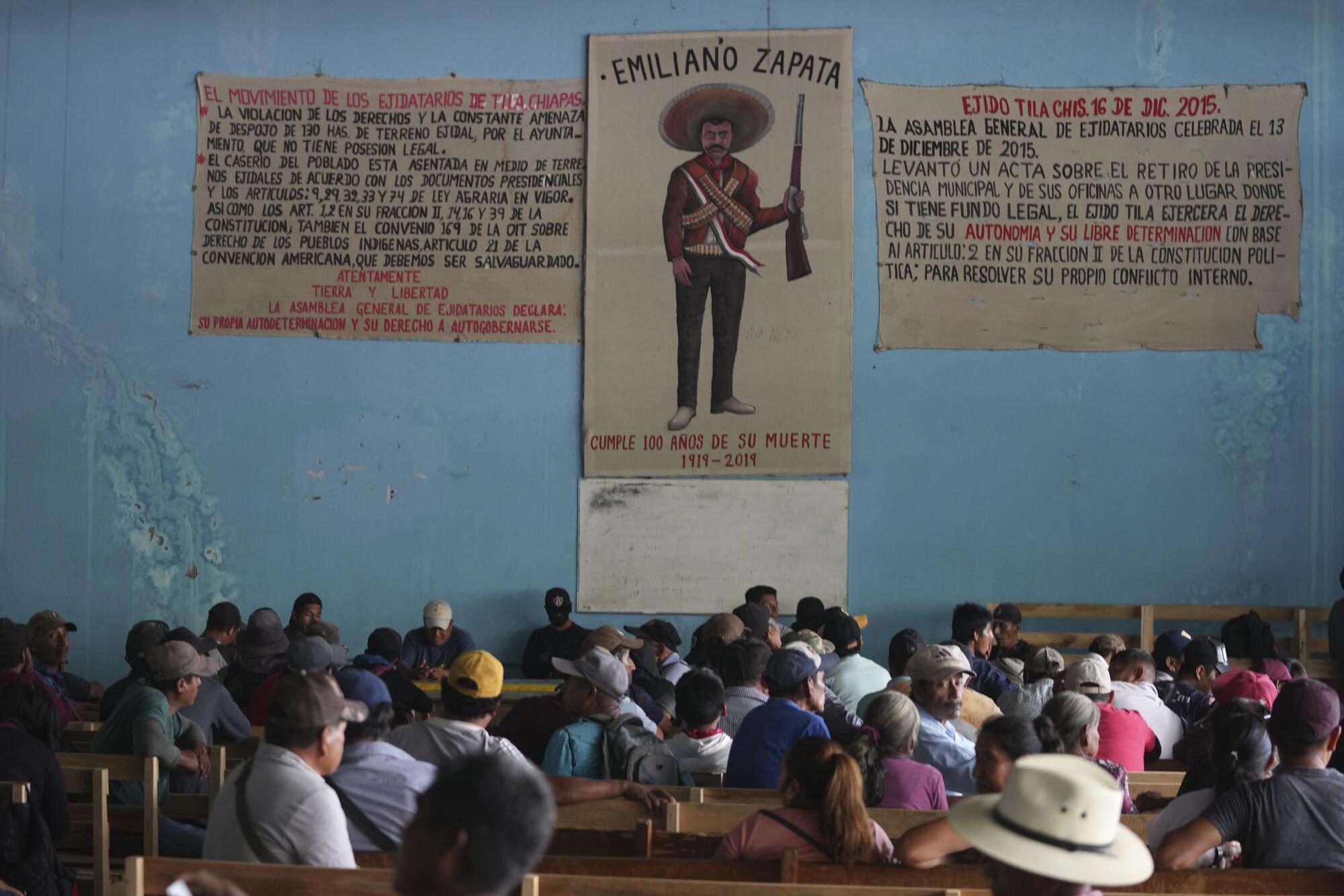
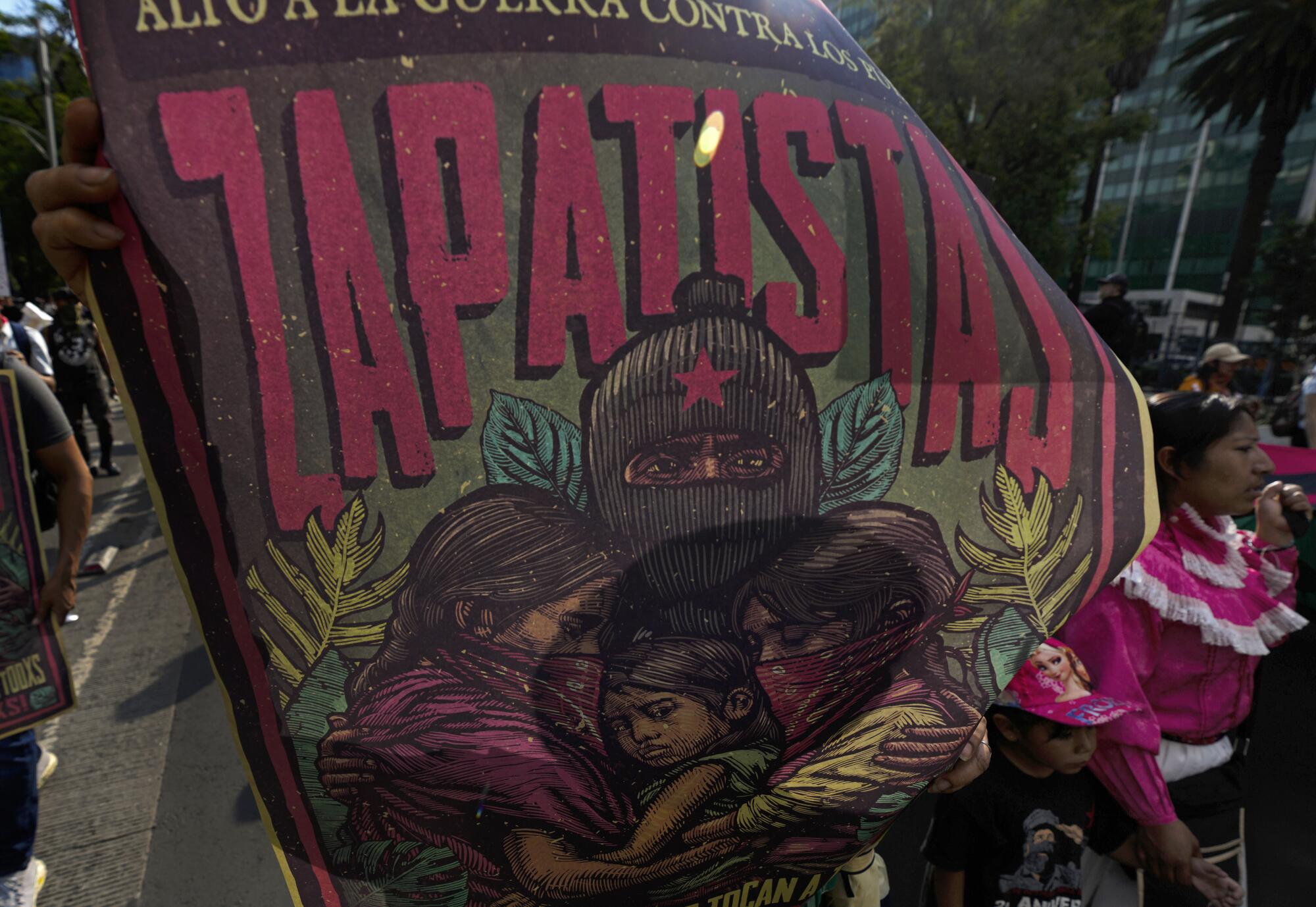
Not that Chiapas hadn’t seen its share of drug trafficking. For decades, cocaine from South America made its way through Chiapas and on to the United States. At the helm was Mexico’s largest and most storied criminal organization.
“Basically the Sinaloa cartel for years had a monopoly in Chiapas,” said Victor Manuel Sánchez, an organized-crime expert at the Autonomous University of Coahuila.
Drugs moved with businesslike efficiency — with sparse competition or government interference — so the cartel had little need for violence.
Critics say the government of Mexican President Andrés Manuel López Obrador is trying to downplay how people have disappeared in recent years.
That began to change around 2020 with the infiltration of the Jalisco New Generation cartel, which was aggressively expanding throughout Mexico.
In July 2021, after gunmen ambushed and killed a senior leader of the Sinaloa cartel and his bodyguards in the state capital, Tuxtla Gutiérrez, the Jalisco syndicate released a statement claiming credit. The hit amounted to a public declaration of war in Chiapas.
At least 16,000 people across Chiapas — 4,000 of them from one town, Tila — have been displaced by violence since the beginning of last year, according to the Fray Bartolomé de las Casas Center for Human Rights. Thousands more have been trapped in their communities, penned in by cartel checkpoints. Mobsters even cut off electricity to pressure residents who refuse to cooperate with them.
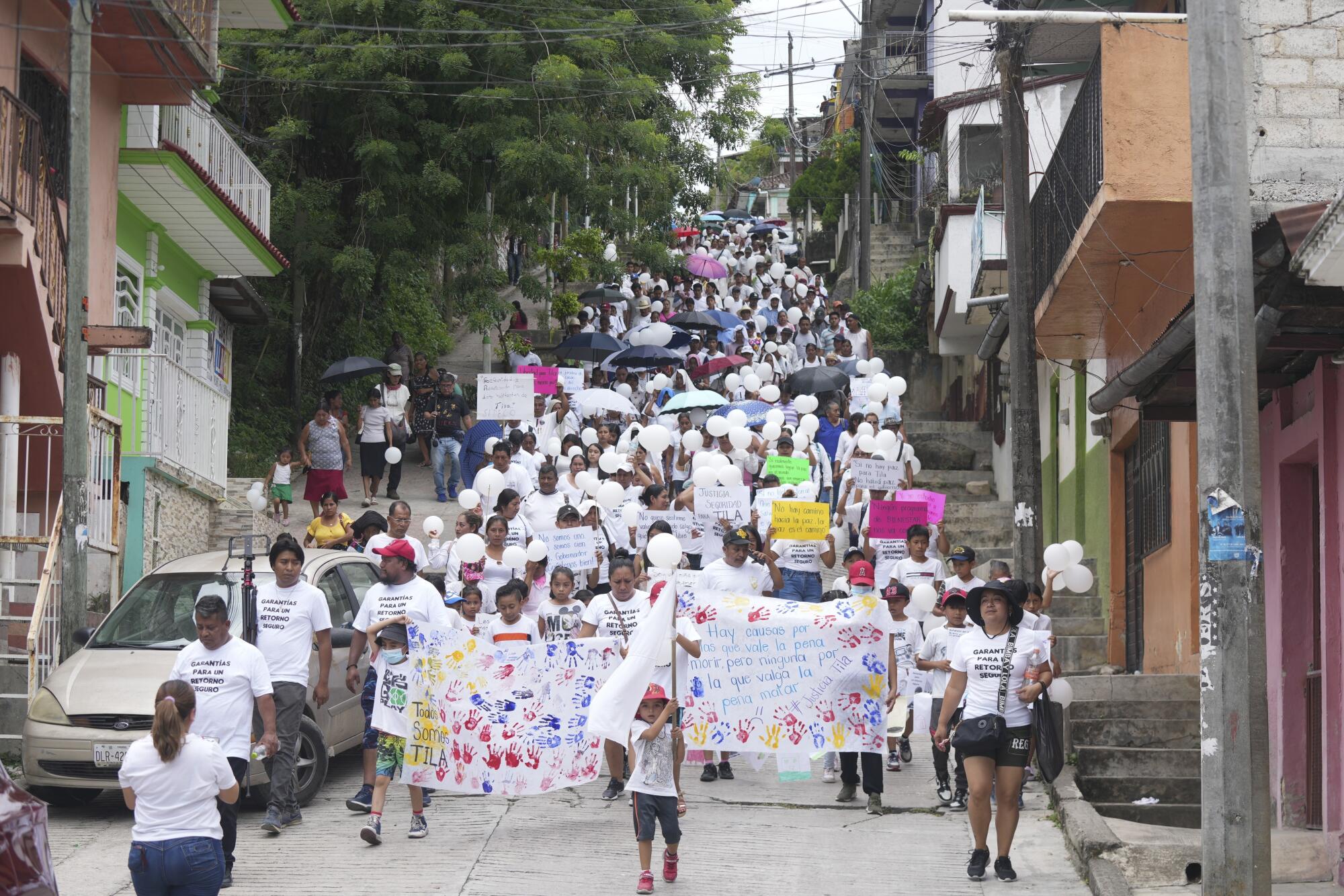
In the meantime, various gangs have posted online images of fighters hoisting automatic weapons.
In a video that went viral in September, a midday parade of pickups and SUVs — some outfitted with turrets where masked men brandished machine guns — ferried Sinaloa cartel pistoleros through the town of San Gregorio Chamic as bystanders along the major border highway shouted their allegiance: “¡Arriba Sinaloa!”
And during this year’s election campaigns, as the cartels sought to install allies in local political offices, attacks on mayoral hopefuls and their entourages left at least 16 people dead in Chiapas in the weeks leading up to the balloting and prompted scores of candidates to resign their electoral bids.
More than 30 candidates have been killed before the Mexican election on Sunday, as criminal gangs and drug cartels seek more power and control.
Then in late June, police in Chiapas discovered the bullet-riddled bodies of 19 men in and around an abandoned dump truck on a dirt road in the township of La Concordia. Authorities said at least six were Guatemalans, and images posted on social media — apparently by the attackers — showed bloodied corpses in fatigues and body armor amid discarded rifles.
“Violence has spread like a cancer in our state,” the Fray Bartolomé center recently reported. “This situation is characterized not only by the armed confrontation among criminal groups, but also the intent to control, with strategies of terror, the social, economic and political life of the communities.”
In other words, Chiapas has come to resemble some of the most conflict-ridden parts of Mexico.
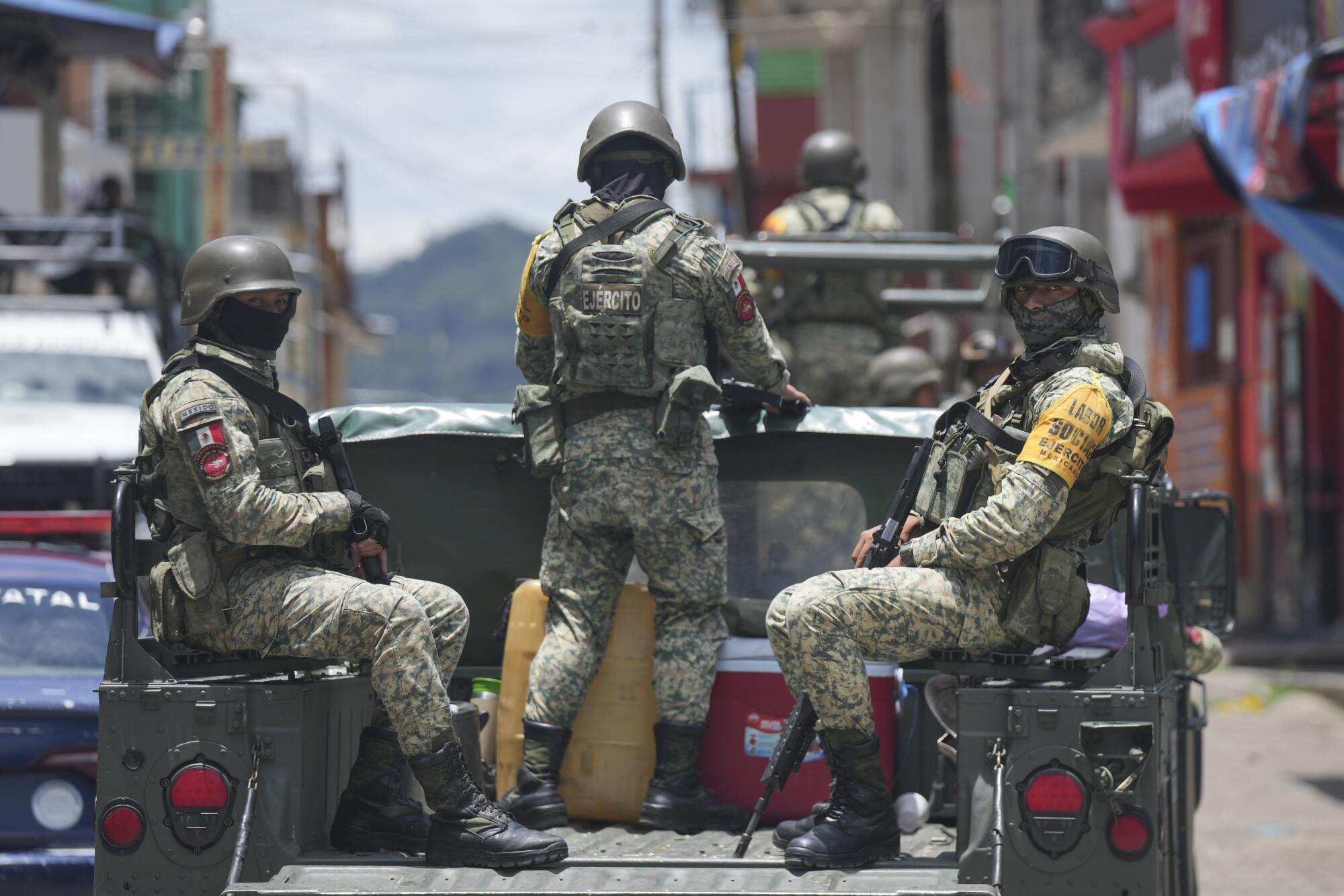
: :
One day last month in the village of Tzanembolom — in the mountains of central Chiapas — gunmen gathered in the street, fired into the air and evicted about half the 200 residents from their homes.
Those targeted say that the attackers were “narcos” and “hit men” from a gang known as Los Herrera, and that the assailants falsely accused them of supporting a rival group known as El Machete.
Victims said they knew little about either group, including whether the groups had affiliations with Mexico’s well-known cartels.
Forced from their homes, the displaced fled to a school that was guarded by police and waited.
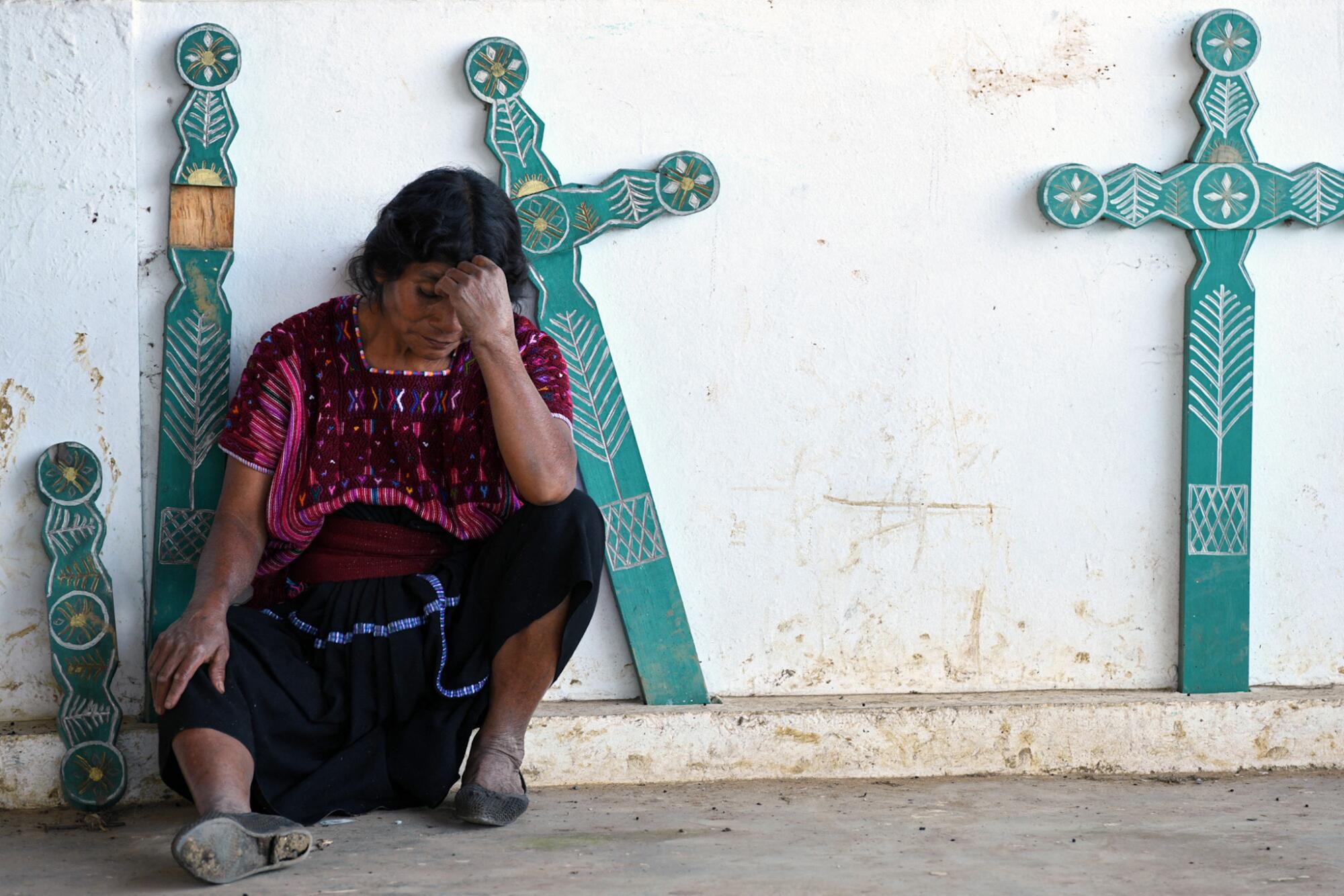
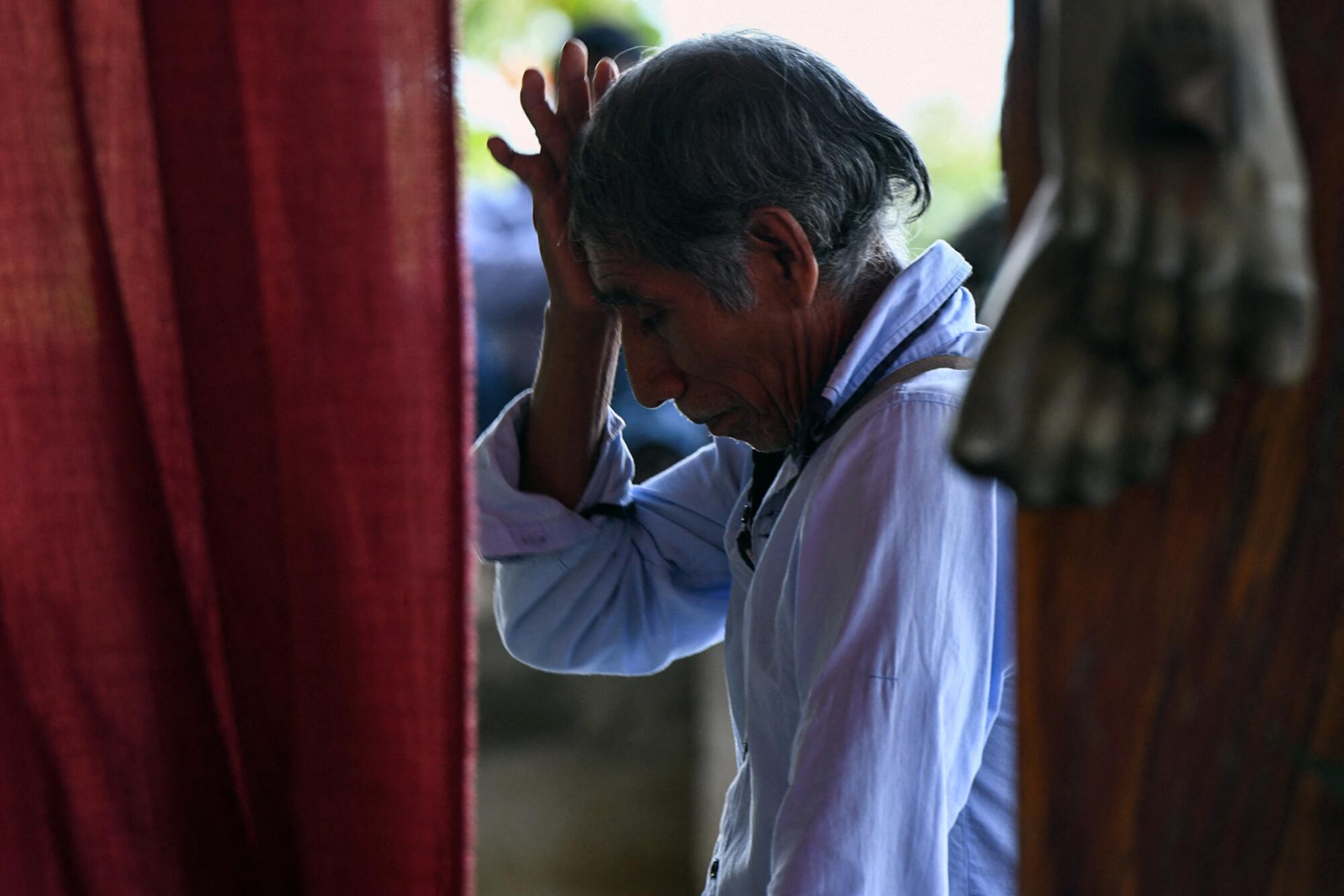
“We suffered through nine days of terror, trapped inside a school like hostages,” explained one of them, Felipe Hernández, 27. “There was little food. We feared we would all be killed.”
Finally, on July 20, Chiapas state authorities arrived and escorted the trapped villagers to safety.
They ended up in the town of Chenalhó at the church of St. Peter the Apostle, where they slept on mats in a community center. Gathered on a patio on a recent afternoon, women in colorful, handcrafted blouses chatted as they heated tortillas on braziers. The women, who spoke Tzotzil and limited Spanish, directed a reporter to village men.
The challenge in Mexico City, built amid lakes by the Aztecs, had long been getting rid of water, not storing it. Now its taps are running dry.
“If authorities can’t do anything to stop the violence, we want the government to give us land to start all over again,” said Vicente Rodríguez, 36, who had fled Tzanembolom with his wife and three children. “We are too afraid to return now. They will kill us.”
In Guatemala, the residents of México Nuevo — along with several hundred other people who had fled southern Chiapas in late July — were staying at a rural schoolhouse, or living with area families.
Guatemalan soldiers stood guard at the school as bored teenagers played catch and soccer with a basketball. One boy lamented that the family cornfields were so far away: “We miss going with our fathers to the milpas.”
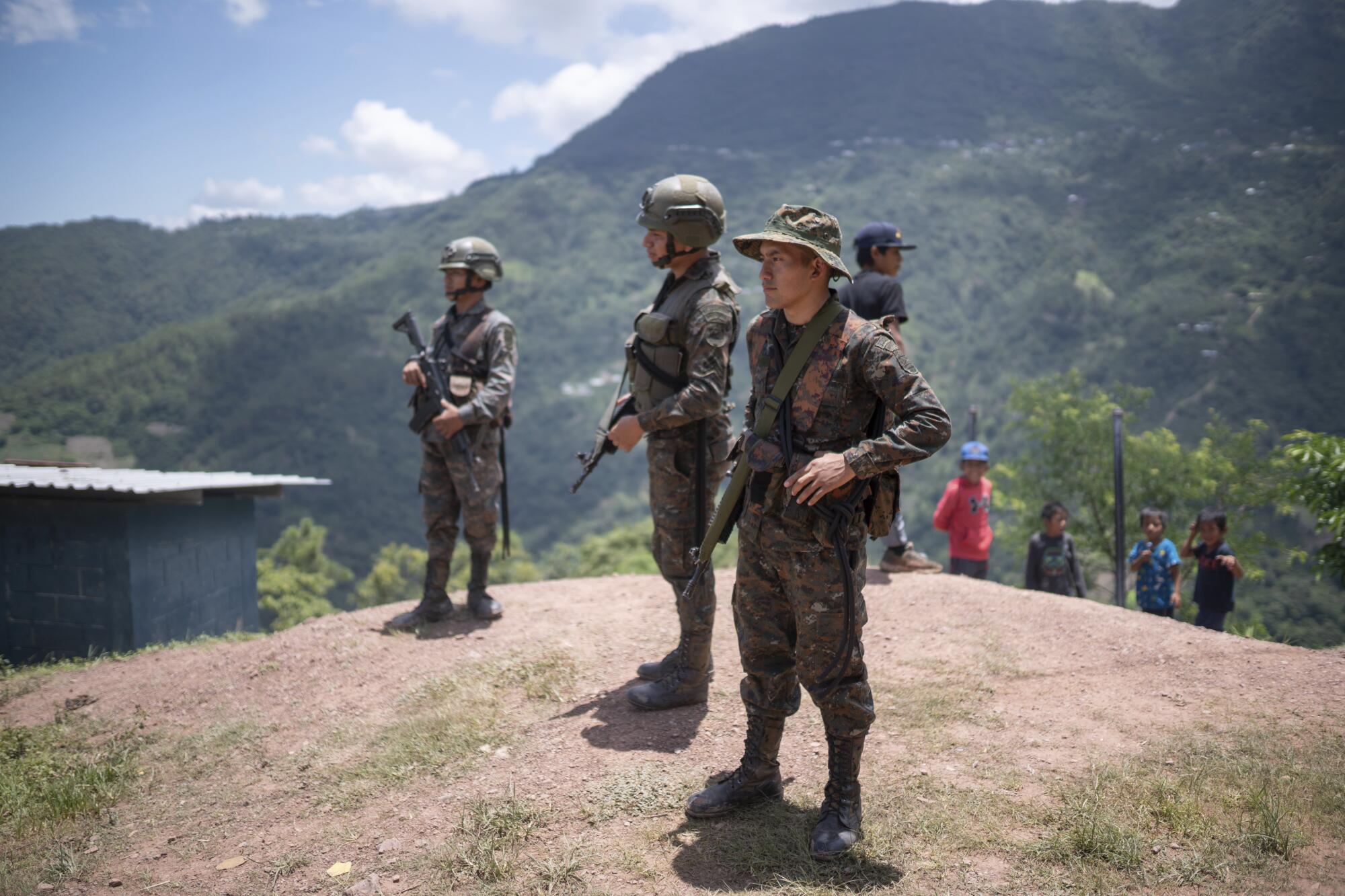
Most of those interviewed said they were afraid to give their full names. A 56-year-old from México Nuevo named Javier described how earlier this year gunmen from the Jalisco cartel kidnapped two of his nephews, ages 25 and 15.
“They came at night and took them from their beds,” he said. “What they want is more recruits.”
Another displaced man, Pedro, 40, explained that he had spent years in Florida and Virginia picking crops and maintaining golf courses before returning to Mexico and building his dream house in the village of San José, where he lived with his wife and two children — until the gangs forced them all out.
“These people will take over our houses,” he said. “But at least we are alive.”
The flight of Mexicans to Guatemala has been an embarrassment for the Mexican government. Mexico has a long history of providing refuge to persecuted exiles, including tens of thousands of Guatemalans who sought sanctuary in the 1970s and 1980s during that country’s civil war.
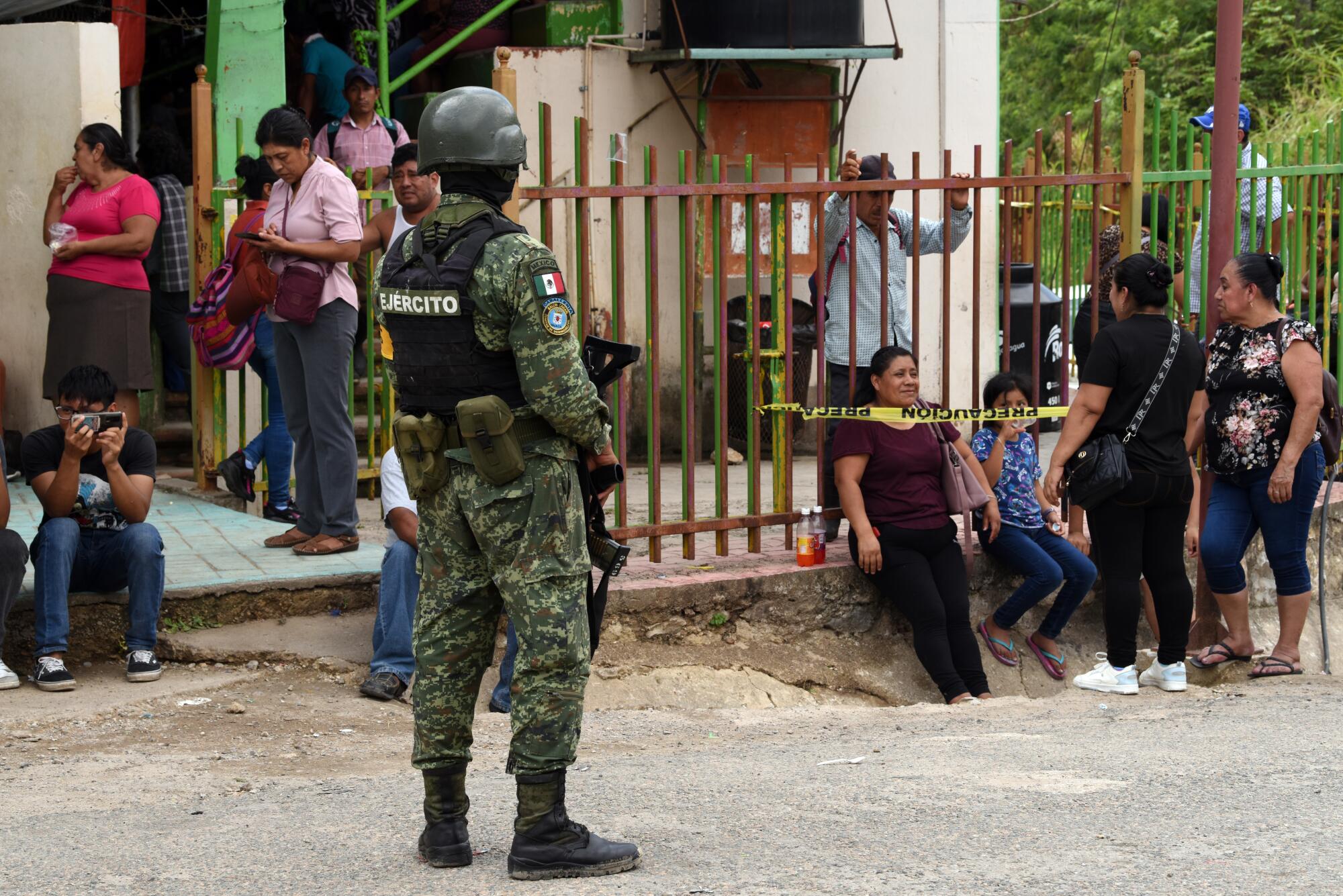
“The incredible message here is that Guatemala is doing a better job protecting its people than Mexico,” said Manuel Sánchez, the organized-crime expert.
Mexican President Andrés Manuel López Obrador, who leaves office Oct. 1 and plans to retire to his family ranch in Chiapas, has repeatedly minimized the chaos. “I have faith that very soon all this region is going to be pacified and brotherhood and concord will return,” he said during a recent visit to La Concordia to inaugurate a new bridge.
Many of the displaced Mexicans in Guatemala said they didn’t even trust the Mexican soldiers who stop by to deliver food. The residents also rejected government offers to move them to a shelter in the Mexican border city of Tapachula, far from their villages.
“The army should be doing its work on the other side, going after the criminals, not sitting back in their barracks,” said a sobbing 38-year-old mother of four. “The soldiers in Mexico patrol along the main roads, but they don’t get up into the mountains. That’s where the gunmen are.”
Froilán Pérez, 80, a lifelong resident of México Nuevo, said his children in the United States have urged him and his wife to join them.
“I’m too old for that,” Pérez said as the couple waited for an exam with volunteer nurses. “We are poor people. We want to go home.”
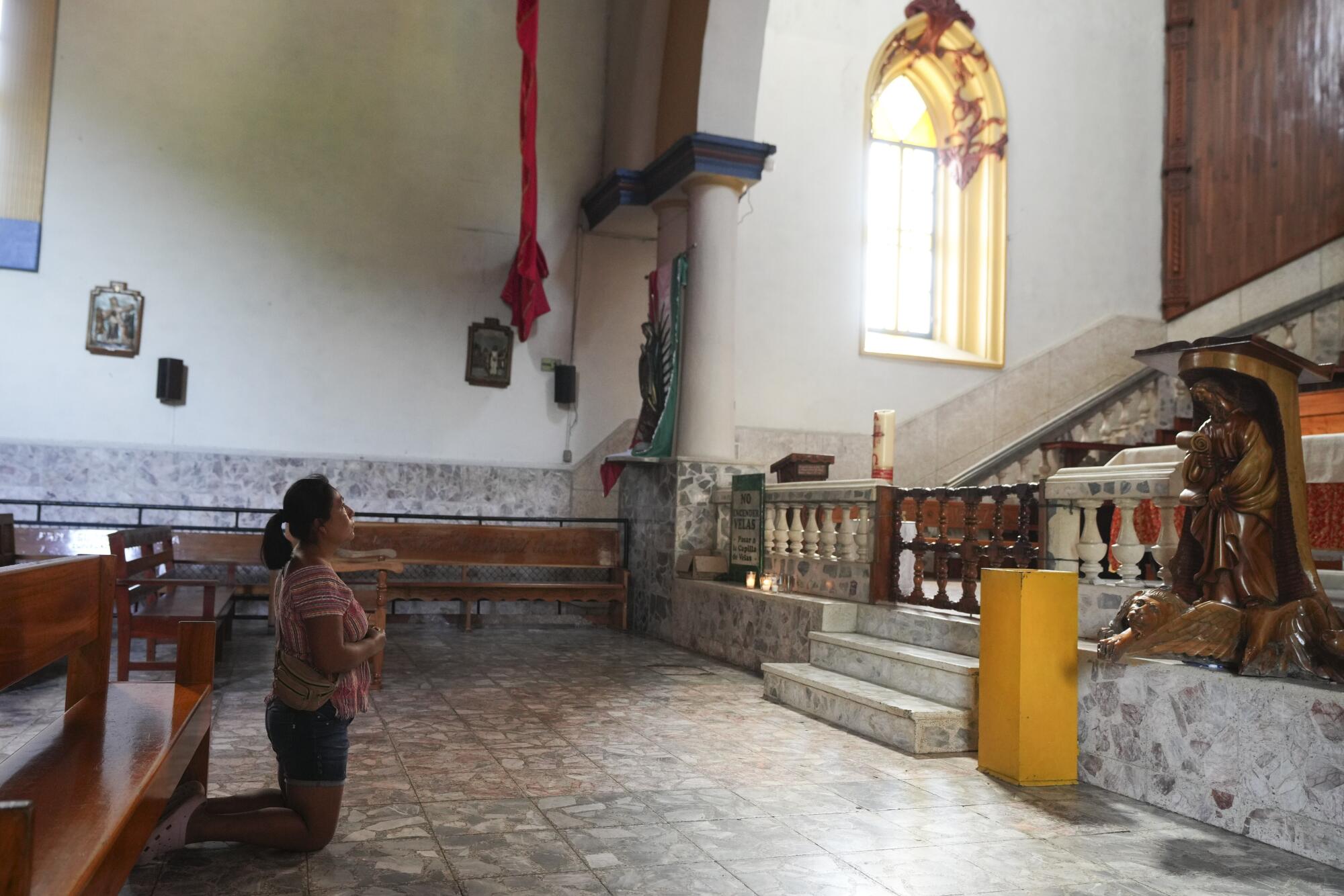
Among those stopping by the school was the town mayor, Audilio Roblero. He was a boy when his family fled war-ravaged Guatemala to Chiapas, where he and his siblings and parents lived for nine years.
“I spent my entire adolescence in Mexico,” the mayor said. “I am very appreciative of how Mexico helped us in our difficult times. And I fully understand what these people are going through. They came to save their lives.”
Times special correspondent Cecilia Sánchez Vidal in Mexico City contributed to this report.
More to Read
Sign up for Essential California
The most important California stories and recommendations in your inbox every morning.
You may occasionally receive promotional content from the Los Angeles Times.

